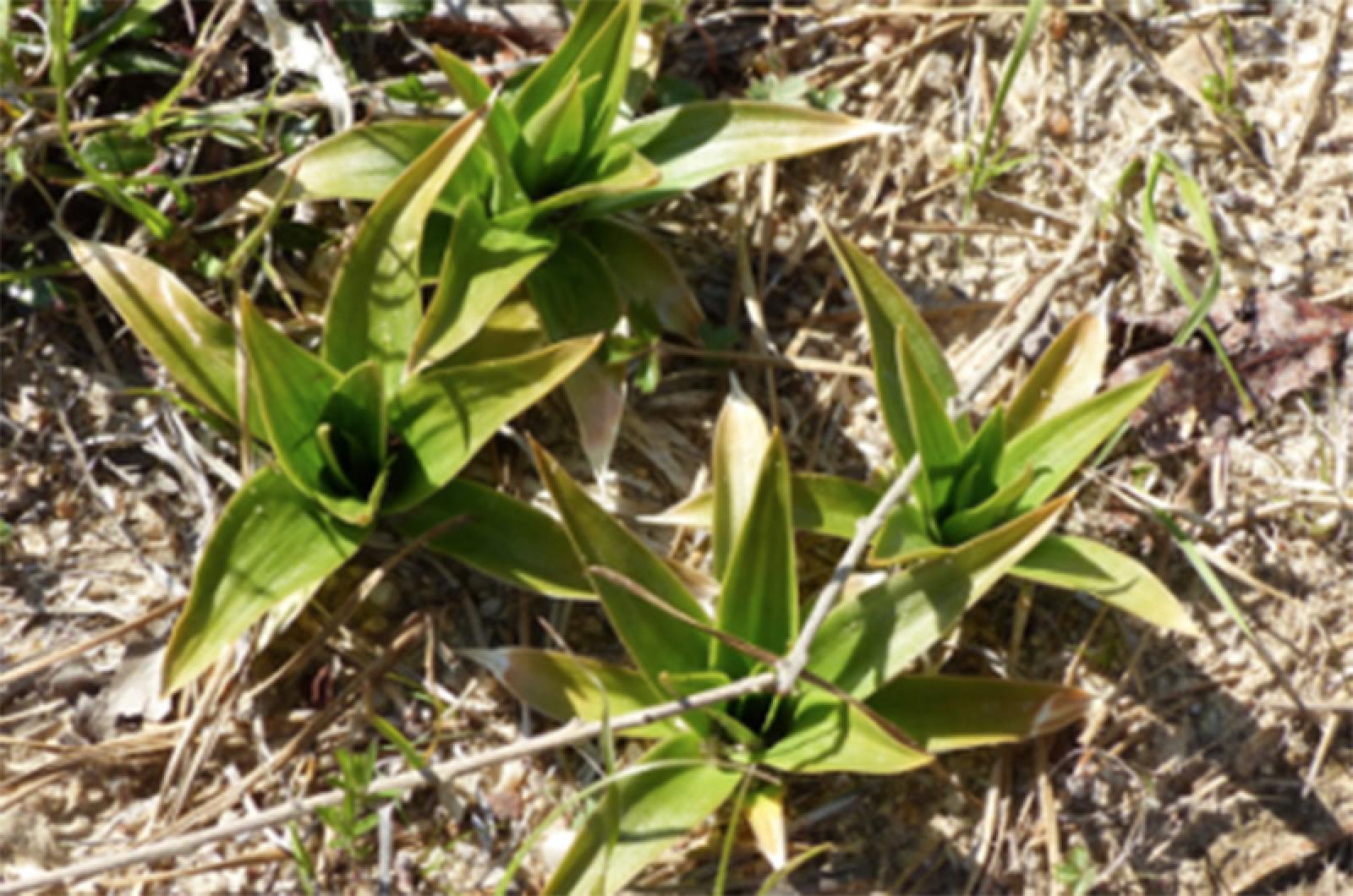Tom Hodgson of West Tisbury found a unicorn in the state forest. He had no idea of what it was when he emailed a photo to assist with an identification as it didn’t have its classic white horn. Though not immediately clear to me either, its identity would be revealed with the help of a wizard.
Botanical wizard Margaret Curtin came to our assistance and, as magic does happen, she quickly conjured up its name, Aletris farinose, true unicorn root.
True unicorn root is a plant whose long raceme of white flowers on a single stem invokes a similarity to a special horned horse. The flowers on this specimen have not yet emerged, so Tom’s photo only showed its leaves. But they were unique enough for Margaret to have immediately known the plant’s name.
Also called white colic root, star grass, ague root, crow corn, Bettie grass and devils’ bit, true unicorn root has a mystical and medicinal history and perhaps even a place in modern pharmacopeia.
Go back to the 13th Century to uncover the etymology of ague root. Ague is derived from the Latin root “acuta,” meaning sharp fever. By the next century, the association with the fever and sickness from malaria stuck to the word and, in colonial times, the definition ague also included a generally malady caused by “bad air.”
As an all-purpose remedy for fever, unicorn root clearly had a role, and was also employed as an emetic and cathartic for treating colic and stomach ailments. Warding off evil spirits was even in its wheelhouse. It was suggested in Cunningham’s Encyclopedia of Magical Herbs to be used to “keep evil at bay” by sprinkling around the house or wearing it in a satchel on your person.
However, it is unicorn root’s place in women’s health that has stood out and stood the test of time. Identified, used and shared for centuries by women, its commercial value was first employed by Lydia Pinkham, whose original vegetable compound made in 1875 was reported to be a female cure-all tonic combating any and all women’s health concerns.
Though some called Lydia a quack, unicorn root had by that time long been employed for women’s wellbeing. It was reportedly good for increasing fertility, hydrating and nourishing many parts, regulating periods and even warding off miscarriages.
Fast forward to modern times. Unicorn root still has a place in contemporary herbal and cosmetological therapies. Beauty products with this ingredient promise moisturizing magic for the face, reduction in wrinkles and suggest improvement of dryness caused by the decrease in estrogen as women age. While not an estrogen compound, purveyors of these products suggest that unicorn root can mimic the characteristics of estrogen and counteract the effects of estrogen loss. Those are very big promises.
Let’s take all of those promises with a grain of salt and perhaps a pinch of skepticism. The realists and cynics among us might believe that there is no fountain of youth, no lotion or potion to stop the natural process of aging, and no chance for appearing eternally young. That’s okay because beauty is not a condition of age, wrinkles or dry skin, it comes from within.
Suzan Bellincampi is director of the Felix Neck Wildlife Sanctuary in Edgartown, and author of Martha’s Vineyard: A Field Guide to Island Nature and The Nature of Martha’s Vineyard.







Comments
Comment policy »